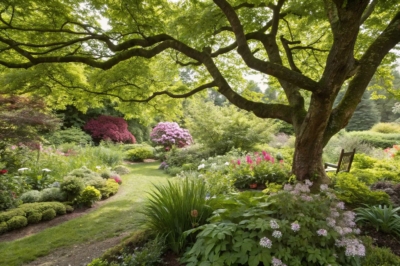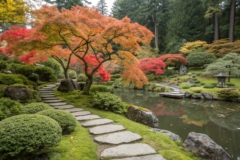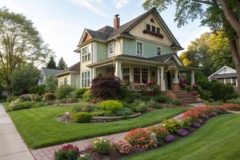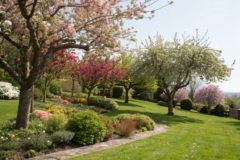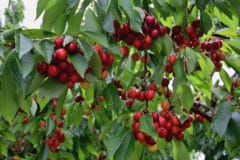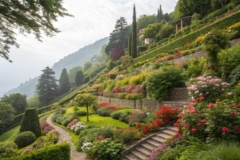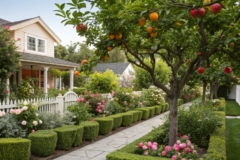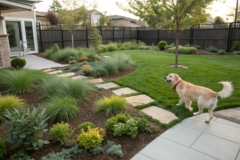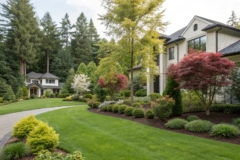1. Coral Bells: A Splash of Color
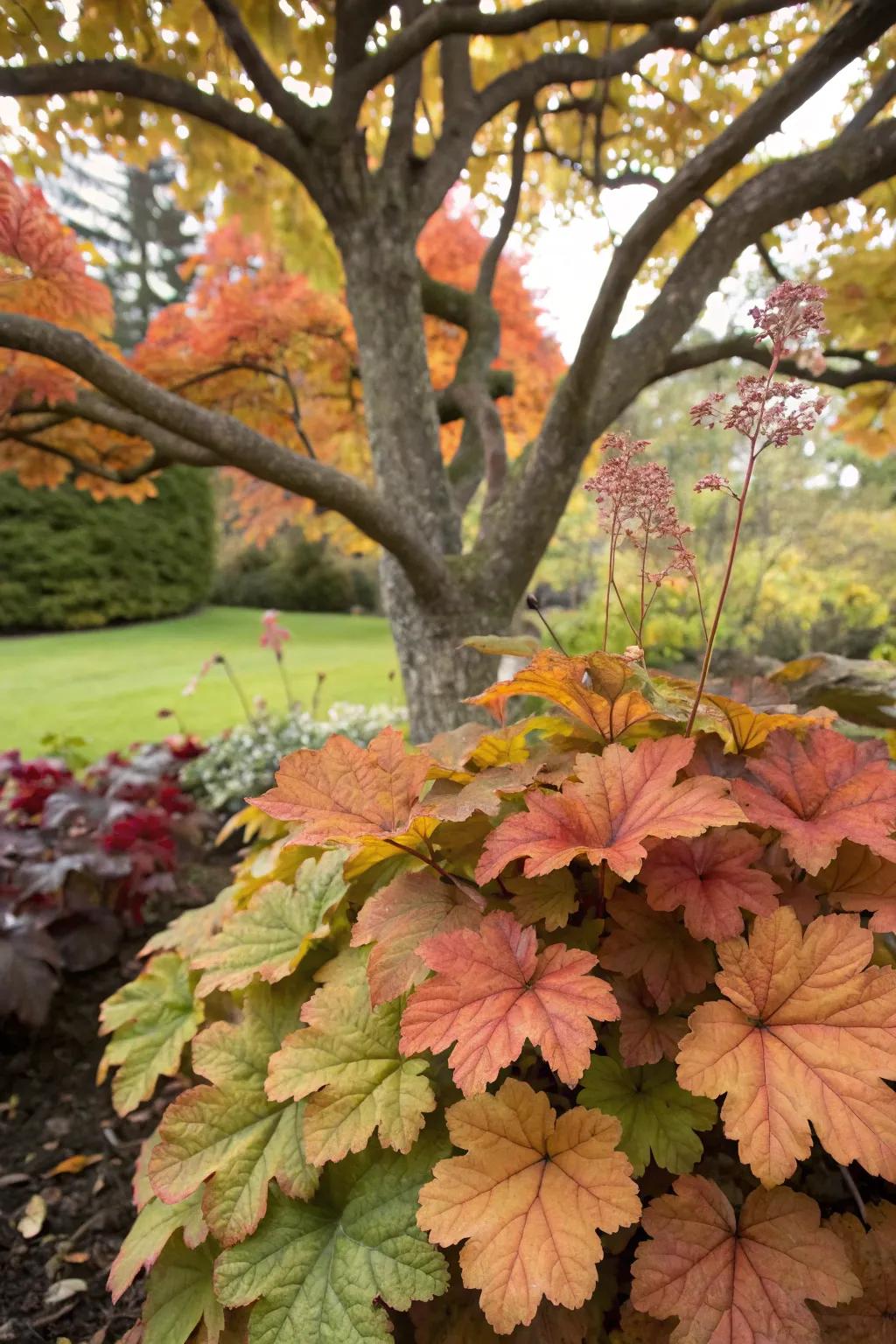
For a pop of color, coral bells are your best friends. Their vibrant leaves come in shades of burgundy, bronze, and silver, and they bring life to those shadowy spots under the tree.
Give these a look:
- Coral Bells Plant Seeds: Bring vibrant hues to your garden with these easy-to-grow coral bells seeds.
- Shade Loving Perennials Fertilizer: Nourish your shade-loving plants with this specially formulated perennial fertilizer.
- Organic Mulch for Gardens: Enhance soil moisture retention around your coral bells with natural, organic mulch.
2. Hostas: The Shade-Loving Classics
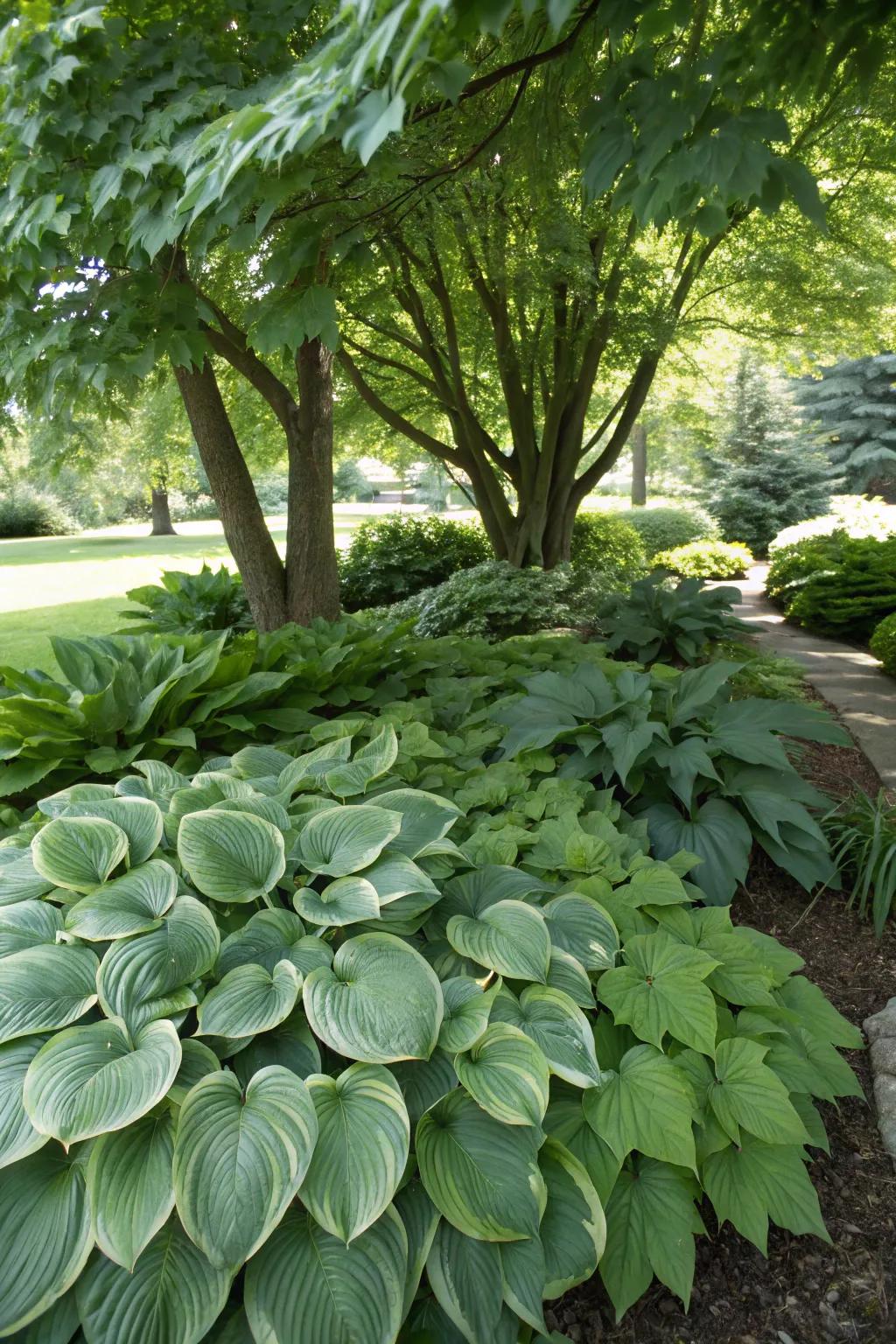
When it comes to creating a lush, green carpet under your maple trees, hostas are a go-to choice that never disappoints. Their broad leaves bring texture and life to shaded areas, and trust me, they’re as low-maintenance as they come.
Maybe worth checking out:
- Shade Garden Fertilizer: Enhance your hostas’ growth with nutrient-rich fertilizer specifically designed for shade gardens.
- Hosta Collection Pack: Expand your garden with a variety of hosta plants perfect for shady areas.
- Decorative Garden Mulch: Maintain moisture and create a clean look with attractive and functional garden mulch.
3. Vinca: Evergreen Vigor
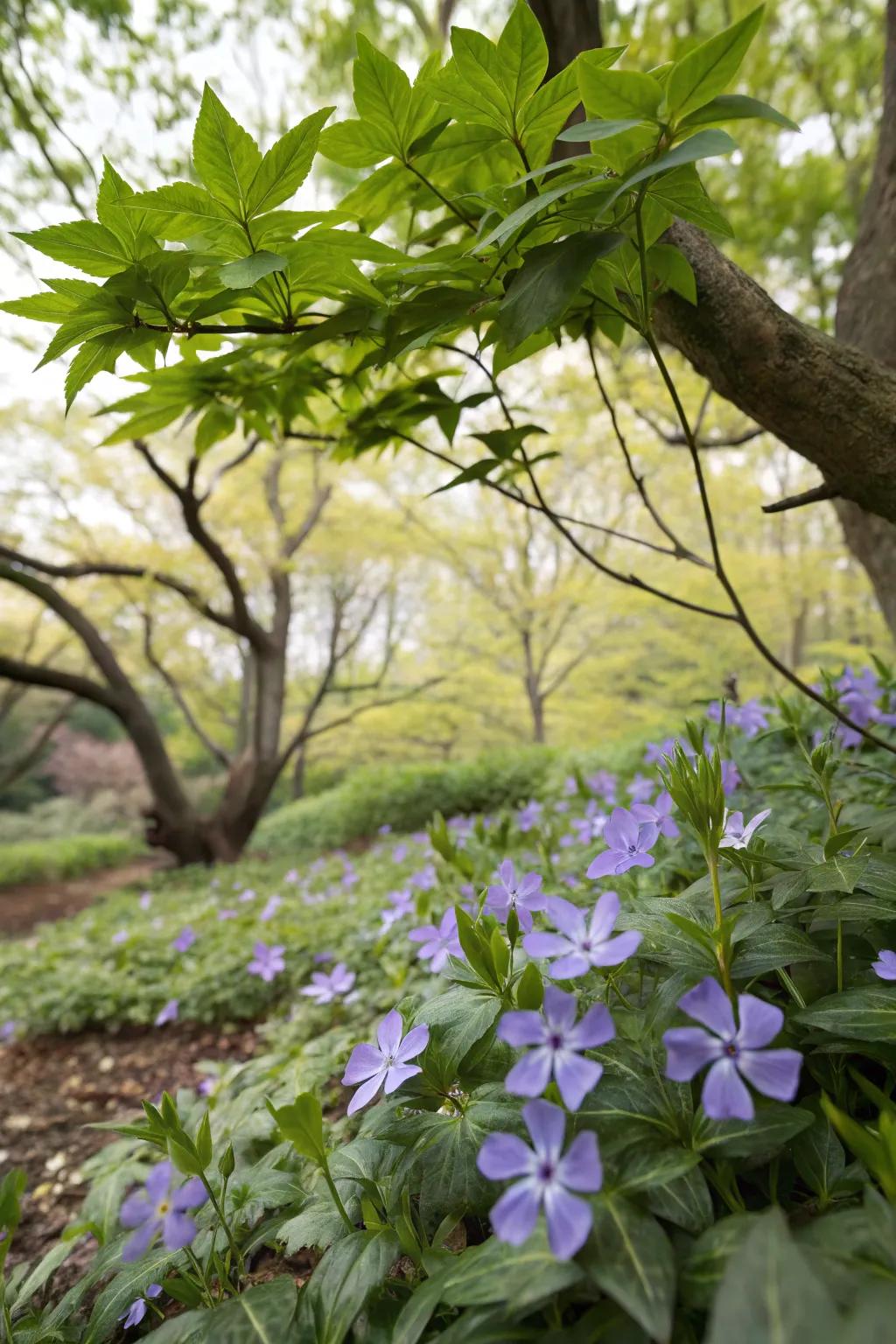
Vinca is a stalwart in the garden, offering evergreen foliage and charming periwinkle flowers. It’s perfect for covering large areas with minimal fuss.
Try these:
- Periwinkle Ground Cover Seeds: Transform shady areas with easy-to-grow periwinkle seeds. Enjoy vibrant greenery all year round.
- Shade Tolerant Fertilizer: Enhance your vinca’s growth with this specialized fertilizer for shaded gardens. Simple and effective care.
- Gardening Mulch for Vinca: Protect vinca plants with quality mulch. Retain moisture and maintain soil temperature easily.
4. Astilbe: The Feather-Like Bloomer

If you love flowers, astilbe is perfect for adding a touch of whimsy with its feathery blooms. It thrives in the moist, shaded soil under maples, providing a burst of color in midsummer.
You might like:
- Astilbe Seeds or Plants: Enhance your garden with vibrant astilbe blooms, perfect for shaded, moist areas under maple trees.
- Moisture Retentive Soil Mix: Use this soil mix to maintain ideal moisture levels for astilbe under maple trees.
- Garden Shade Cloth: Protect astilbe blooms from excessive sun with this easy-to-install garden shade cloth.
5. Japanese Painted Fern: A Splash of Silver
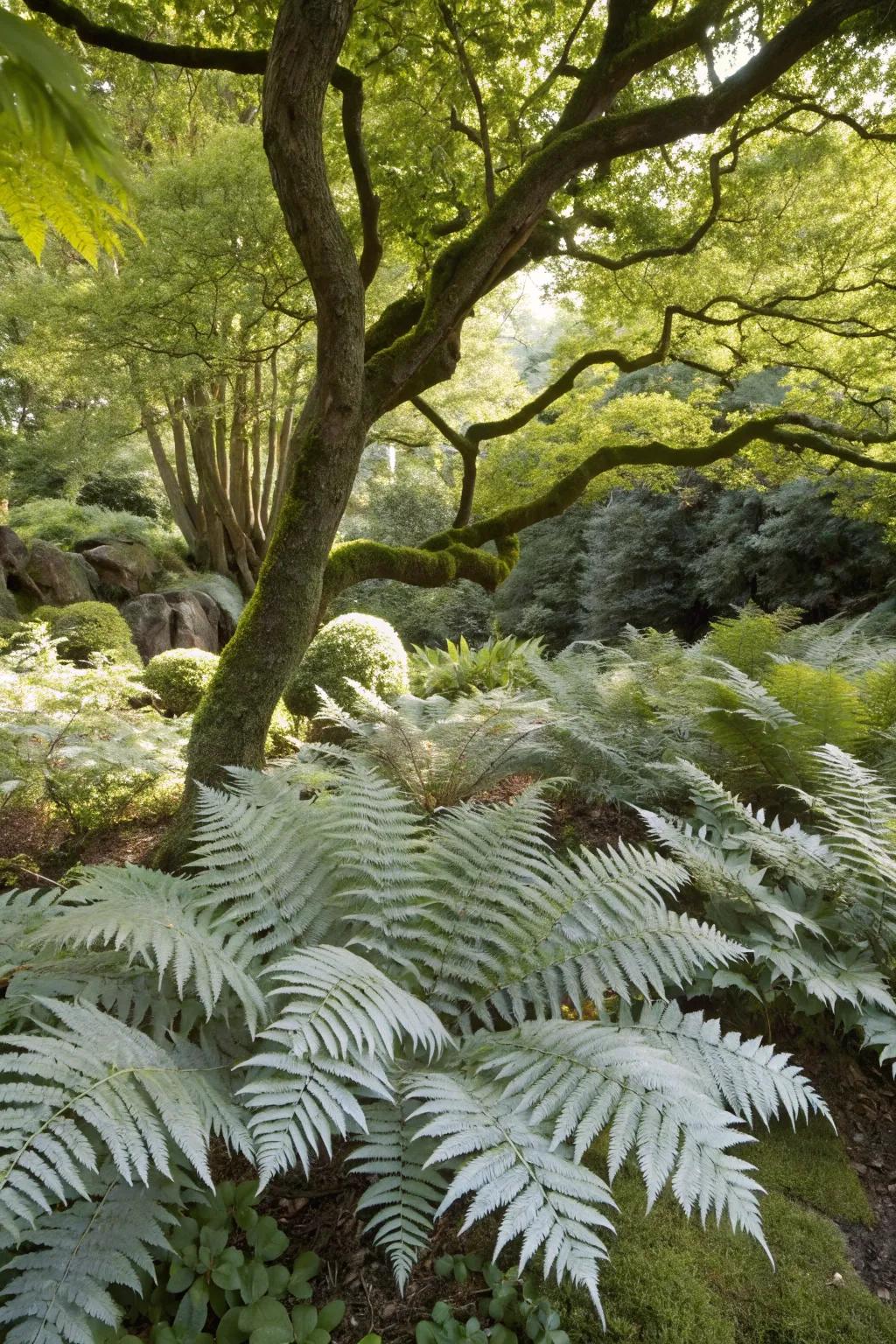
For a bit of silver sheen in your garden, Japanese painted ferns are a stunning choice. Their silvery fronds brighten up the darkest corners, and I love how they pair with hostas.
May just do the trick:
- Shade-Tolerant Perennial Plant Fertilizer: Boost your ferns’ growth with this fertilizer, specially formulated for shade-loving plants.
- Decorative Garden Edging: Enhance your garden aesthetics by defining spaces with elegant decorative edging.
- Gardening Hand Tools Set: Tend to your ferns with ease using this versatile gardening hand tools set.
6. Lily of the Valley: Fragrant Bells
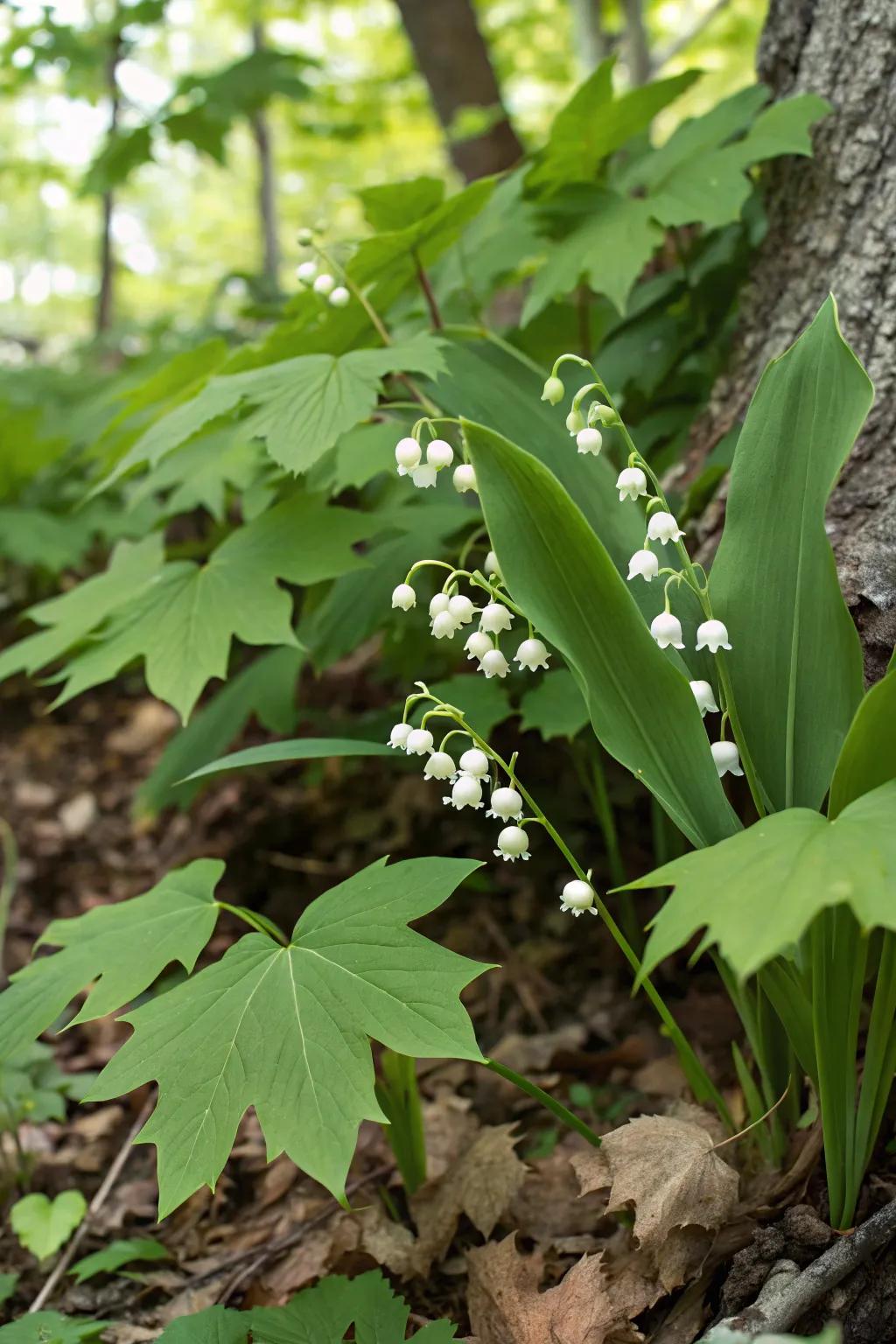
Lily of the valley adds a touch of nostalgia with its fragrant, bell-shaped blooms. I adore how it spreads gently to create a sweet-smelling carpet under the tree.
A few relevant products:
- Lily of the Valley Bulbs: Plant these bulbs to create a fragrant, elegant carpet of blooms under your maple tree.
- Shaded Area Fertilizer: Ensure lush growth of your Lily of the Valley with this nourishing shaded area fertilizer.
- Moisture Retaining Soil Mix: Enhance your planting with moisture-retaining soil, perfect for supporting healthy under-tree growth.
7. Barrenwort: The Undemanding Beauty
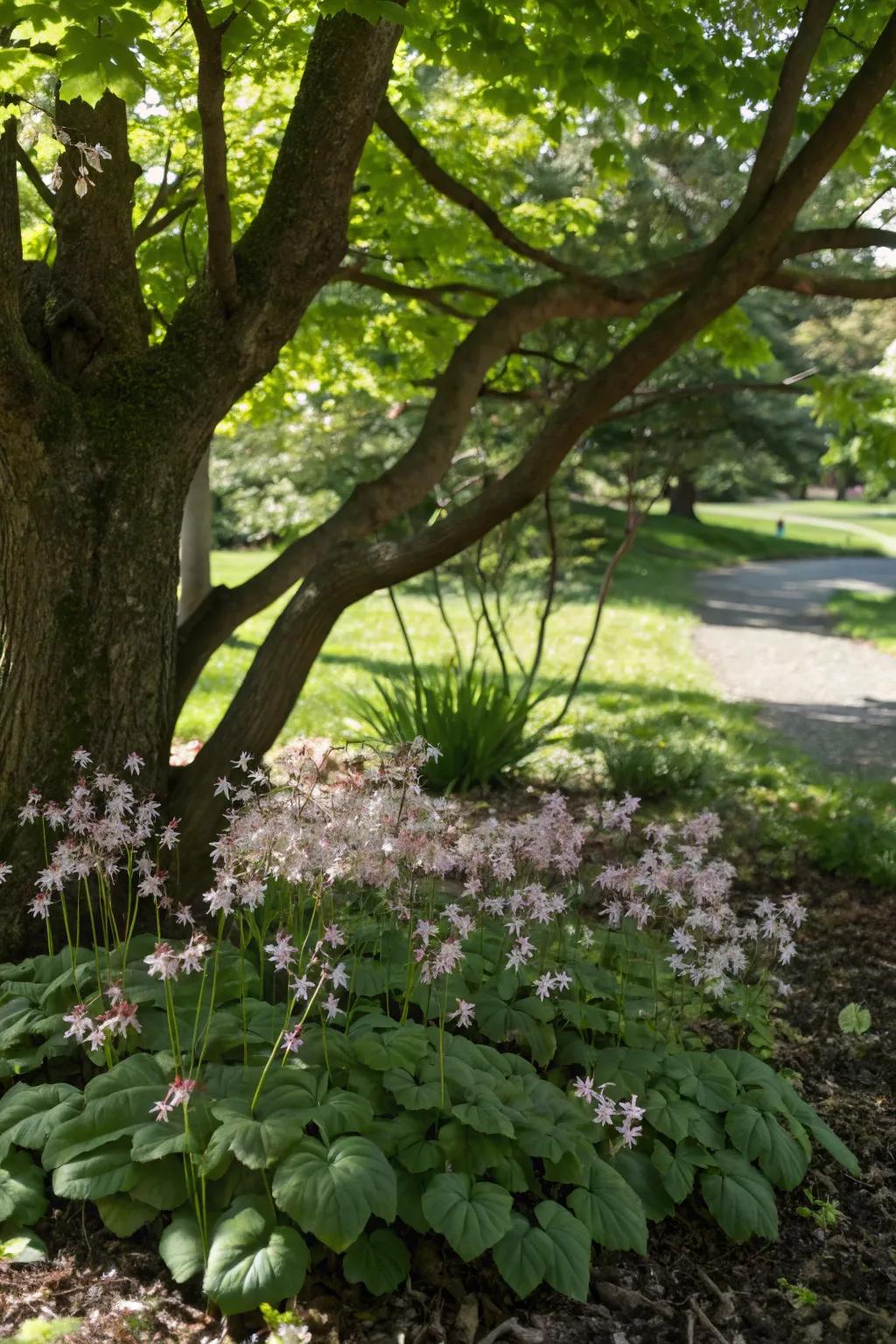
Barrenwort is one of those plants that I love for its undemanding nature. Its delicate flowers and foliage bring a fairy-tale feel to the shaded areas, and it’s as resilient as they come.
A few choices to try:
- Shade Garden Fertilizer: Enhance growth and vibrant blooms under your maple trees with this specialized shade garden fertilizer.
- Organic Mulch for Shade Plants: Protect your barrenwort with moisture-retaining organic mulch, perfect for shaded garden areas.
- Shade Cloth for Garden: Ensure your barrenwort thrives by controlling light exposure with an easy-to-install shade cloth.
8. Lamium: The Hardy Ground Cover
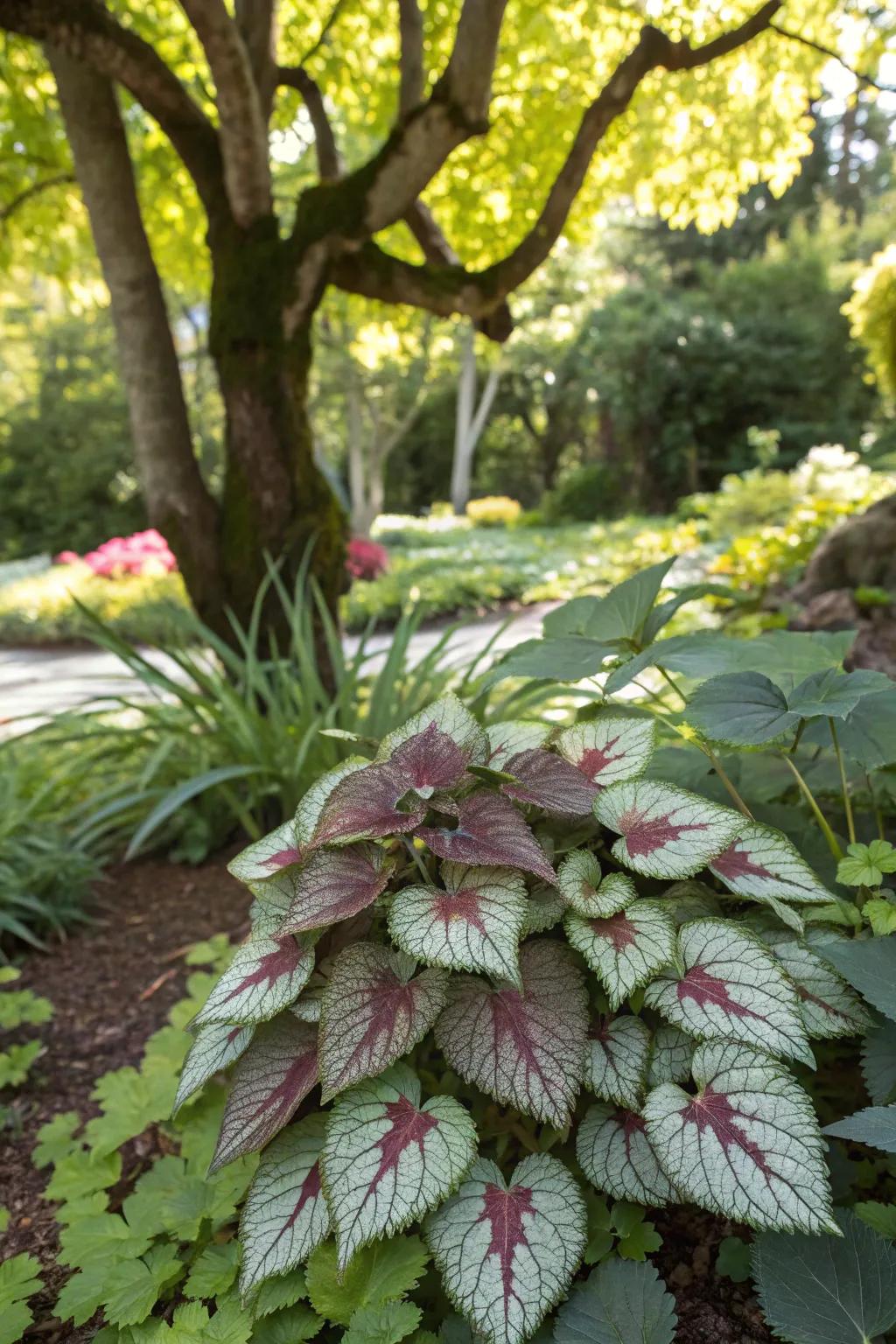
When I need a tough ground cover, lamium is my go-to. It’s hardy, spreads well, and its variegated leaves add brightness to those shadowy spots.
Might be a good match:
- Lamium Seeds or Plants: Plant these lamium seeds to quickly brighten and cover shadowy garden areas.
- Garden Shade Cloth: Enhance your shaded areas using this durable shade cloth for optimal plant growth.
- Organic Mulch: Apply organic mulch to enrich soil and retain moisture under your maple trees.
9. Pachysandra: The Evergreen Carpet
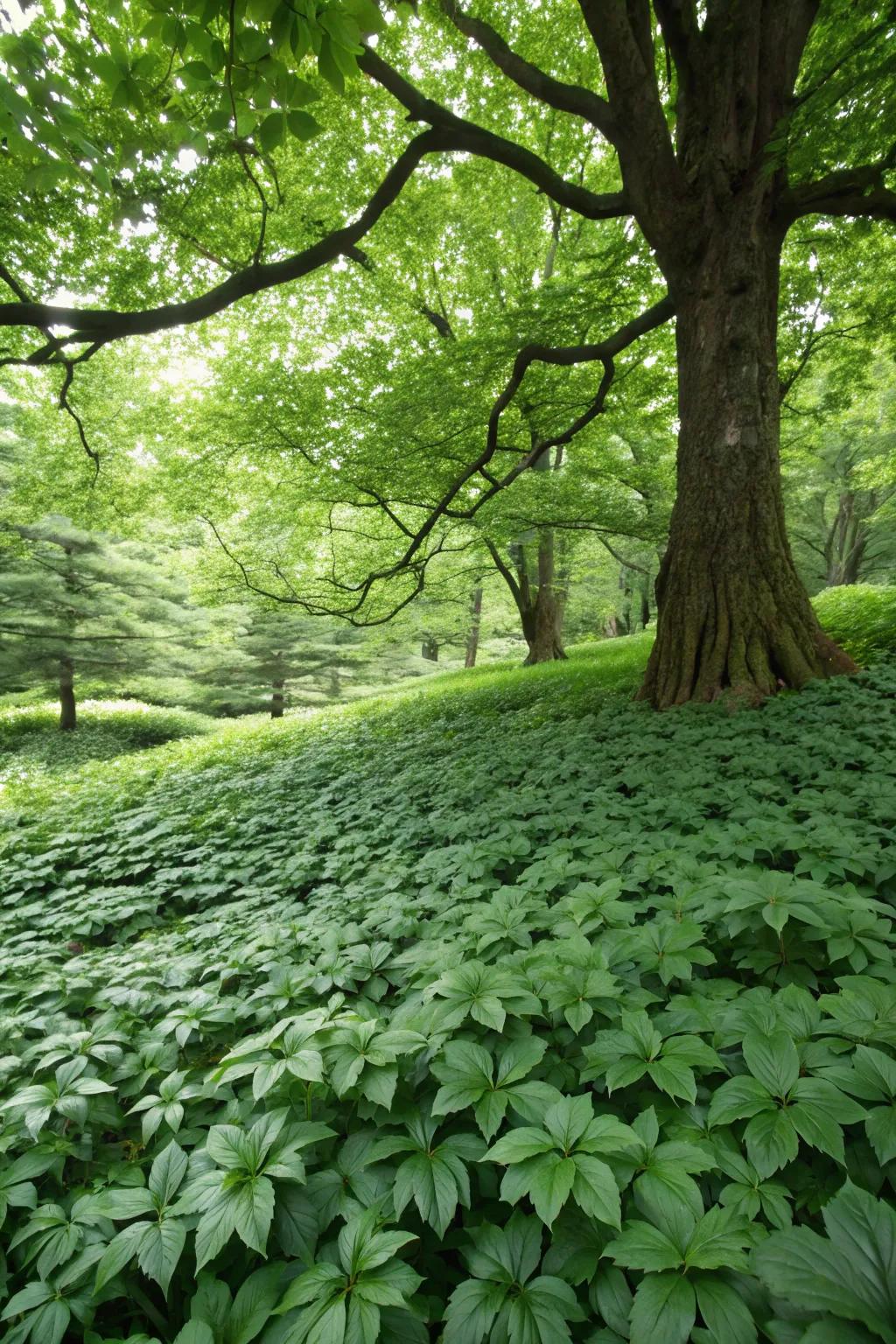
For an evergreen solution, pachysandra is unbeatable. This ground cover creates a lush, green carpet, and once it’s established, you’ll barely have to lift a finger.
Possibly handy products:
- Shade Tolerant Ground Cover Seed Mix: Transform shaded areas with this robust ground cover seed mix. Simple and effective for greenery.
- Organic Plant Fertilizer for Ground Covers: Give your pachysandra the nutrients it needs with this easy-to-use organic fertilizer.
- Mulch Mat Weed Barrier: Reduce maintenance with this biodegradable weed barrier, perfect for protecting your ground cover.
10. Pennsylvania Sedge: Grass-Like Elegance
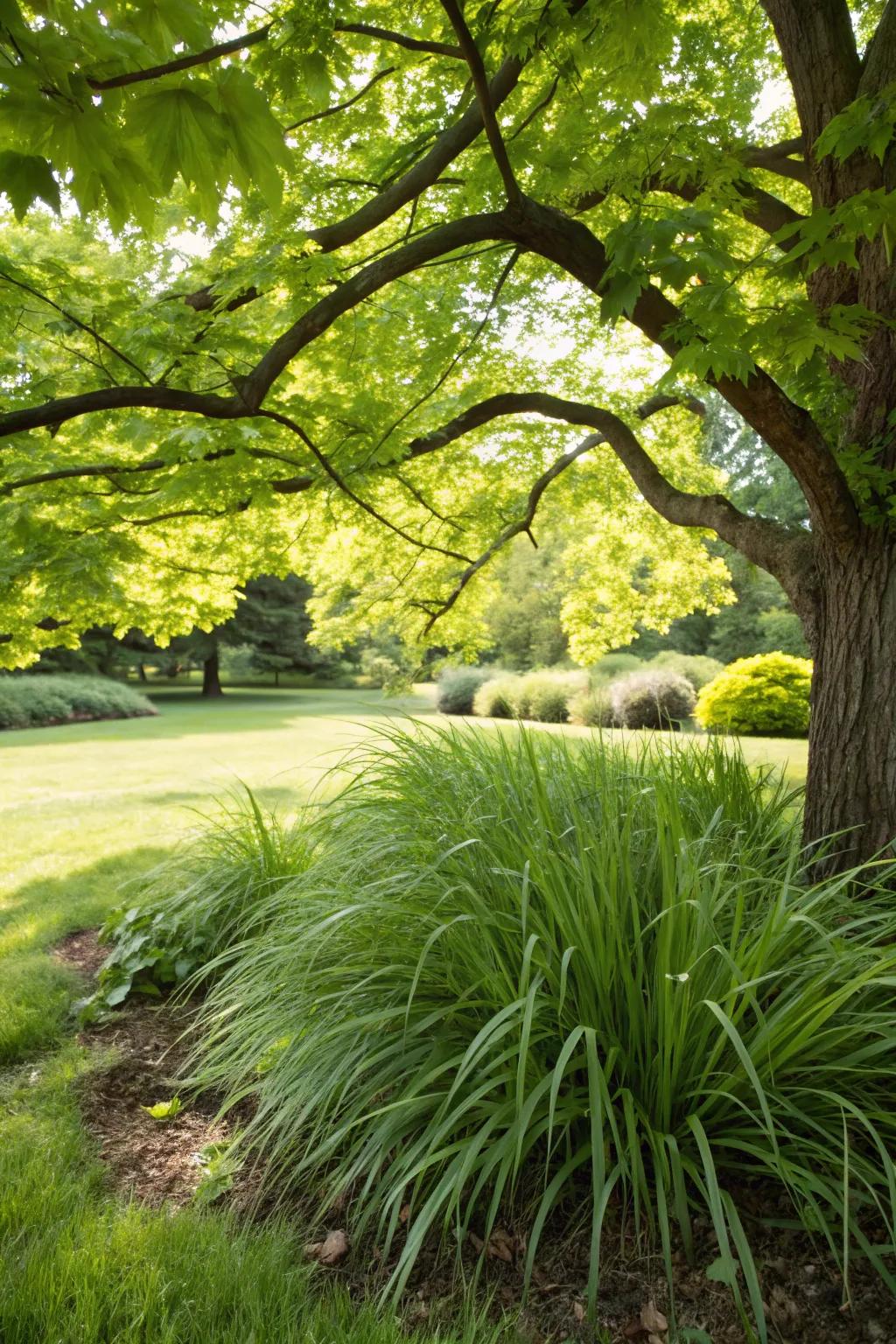
For a grass-like effect, Pennsylvania sedge is ideal. It’s perfect for dry, shaded areas, and its fine texture adds a soft elegance that I just love.
Products that could assist:
- Shade-Tolerant Perennial Grass Seeds: Enhance your garden’s charm with shade-tolerant grass seeds, perfect for dry, shaded soils.
- Organic Mulch for Shaded Areas: Keep your sedge nourished and soil healthy with premium mulch designed for shaded environments.
- Garden Edging for Shaded Borders: Define garden paths beautifully with edging suitable for planting under trees.
11. Hepatica: Early Spring Bloomer

For early spring blooms, hepatica is a delightful choice. Its charming flowers peek through the leaf litter, bringing the first signs of life before the maple fully leafs out.
A few helpful options:
- Hepatica Plant Start Kit: Start your spring garden with this easy-to-use Hepatica plant kit. Perfect for beginners.
- Organic Leaf Litter Mulch: Enhance your garden’s health with this organic mulch, ideal for underneath maple trees.
- Shade Loving Perennial Mix: Add variety under your maple trees with this mix of shade-loving perennials for seasonal blooms.
12. Bleeding Heart: A Romantic Touch
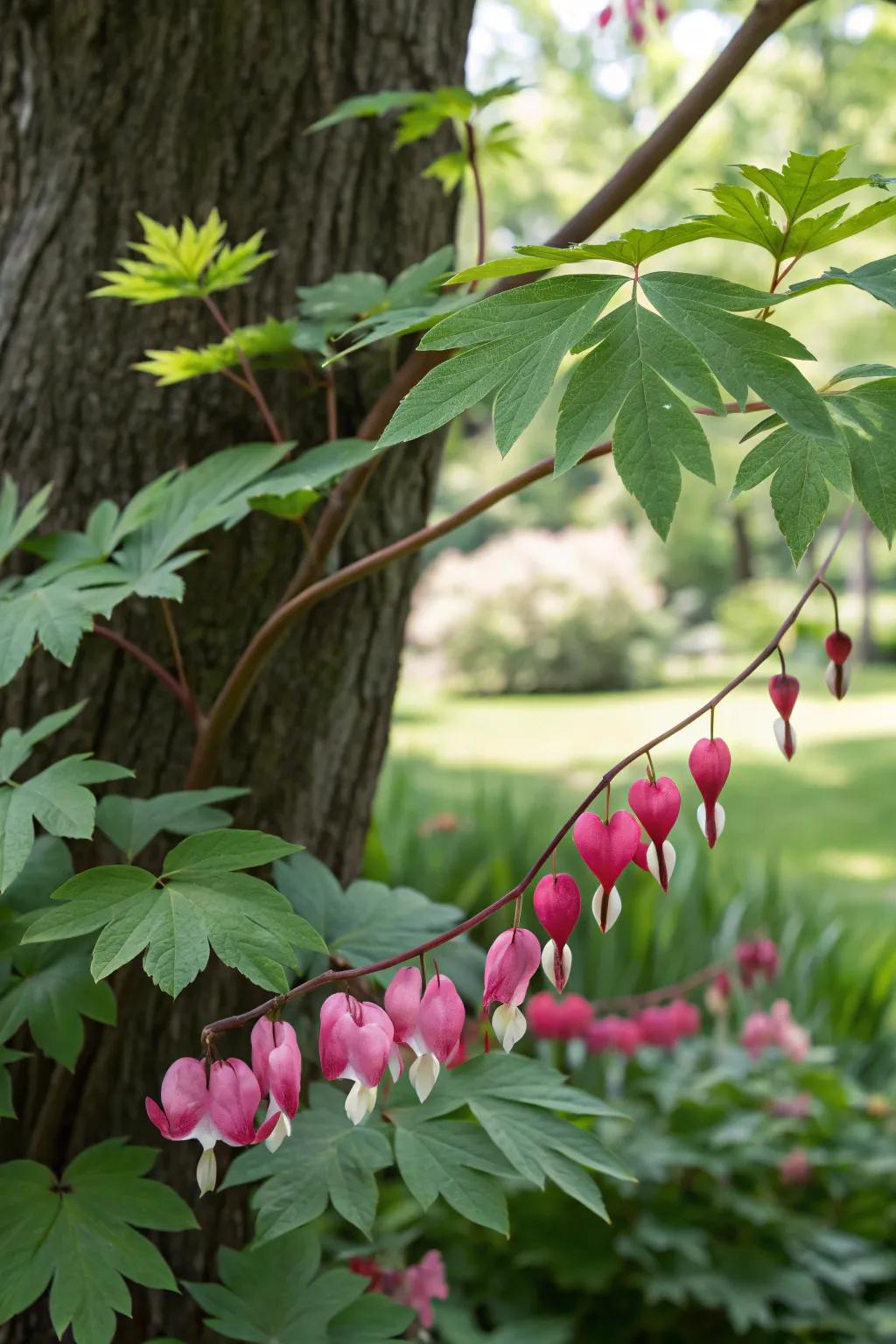
Bring romance to your garden with bleeding heart. Its heart-shaped blooms dangle elegantly, making it a captivating addition to the shaded ground under maples.
A few things you might like:
- Bleeding Heart Seeds: Cultivate elegance in your garden with bleeding heart seeds. Perfect for shaded spots under maples.
- Shade-loving Plant Fertilizer: Enhance growth with fertilizer suited for shade-loving plants like bleeding hearts. Ensure vibrant blooms.
- Garden Trowel Set: Equip yourself with a trowel set for easy planting and care of your bleeding hearts.
13. Ferns: Adding a Touch of Elegance

Ferns are like the graceful dancers of the plant world, bringing elegance and a woodland feel to the shaded areas under your maples. I find that maidenhair ferns, with their delicate fronds, are the perfect way to add softness and movement.
These products might help:
- Shade Loving Fern Seeds: Cultivate a serene garden under your maples with these easy-to-grow, shade-loving fern seeds.
- Decorative Garden Rocks: Enhance the woodland feel with these natural decorative rocks, perfect for surrounding your ferns.
- Organic Mulch for Ferns: Maintain moisture and nurture your ferns with this premium organic mulch, perfect for shaded areas.
14. Sweet Woodruff: Vanilla-Scented Delight
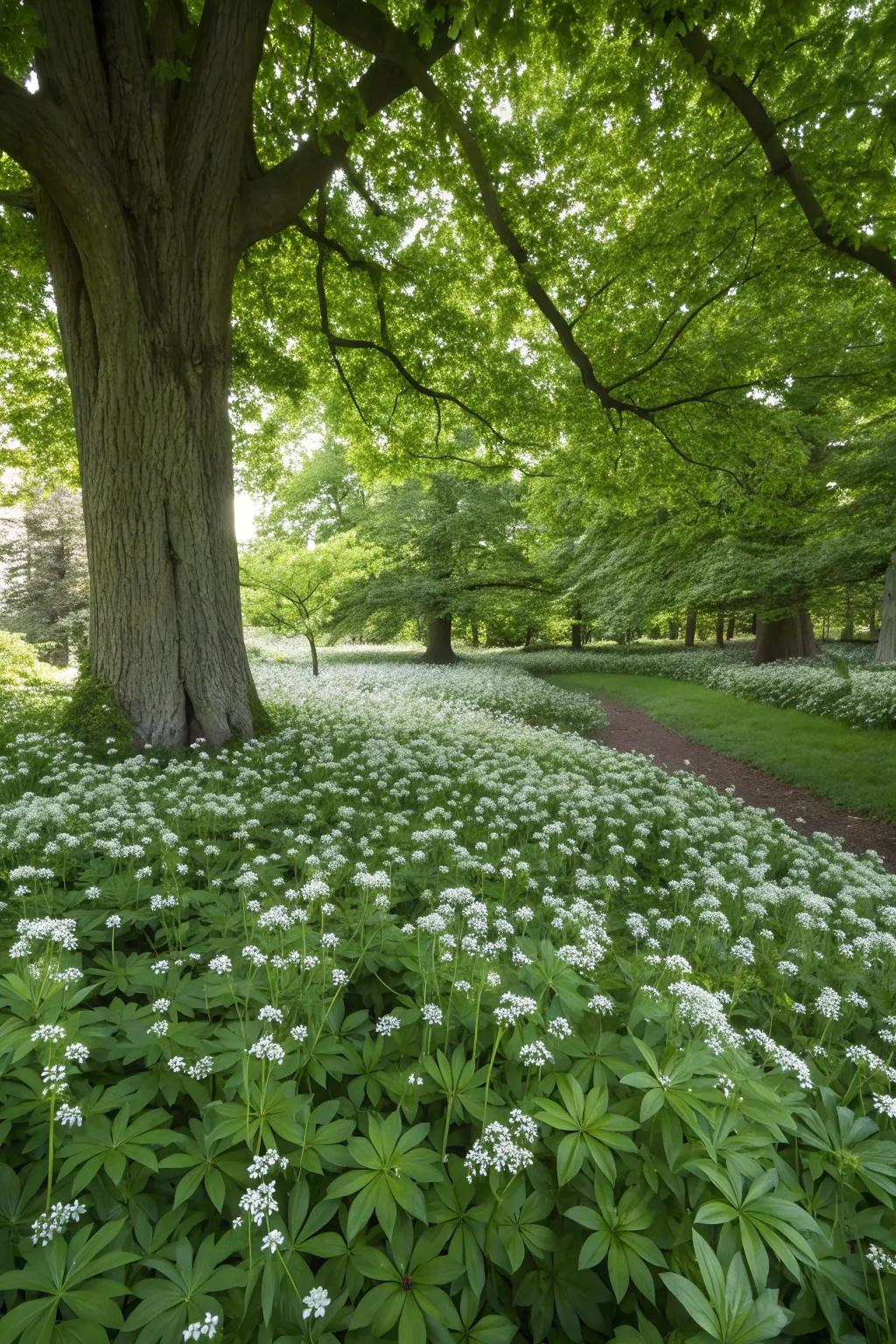
For a fragrant ground cover, sweet woodruff is unbeatable. Its vanilla-scented leaves create a dense mat of greenery, perfect for adding aroma and texture under your maple.
Consider these options:
- Sweet Woodruff Seeds: Plant sweet woodruff seeds to enjoy a lush, aromatic ground cover under your maple tree.
- Organic Gardening Soil: Enhance your garden’s growth with organic soil, ideal for nurturing sweet woodruff plants.
- Garden Hand Tools Set: Equip yourself with essential tools for easy planting and maintaining your garden paradise.
15. Wild Ginger: A Unique Ground Cover
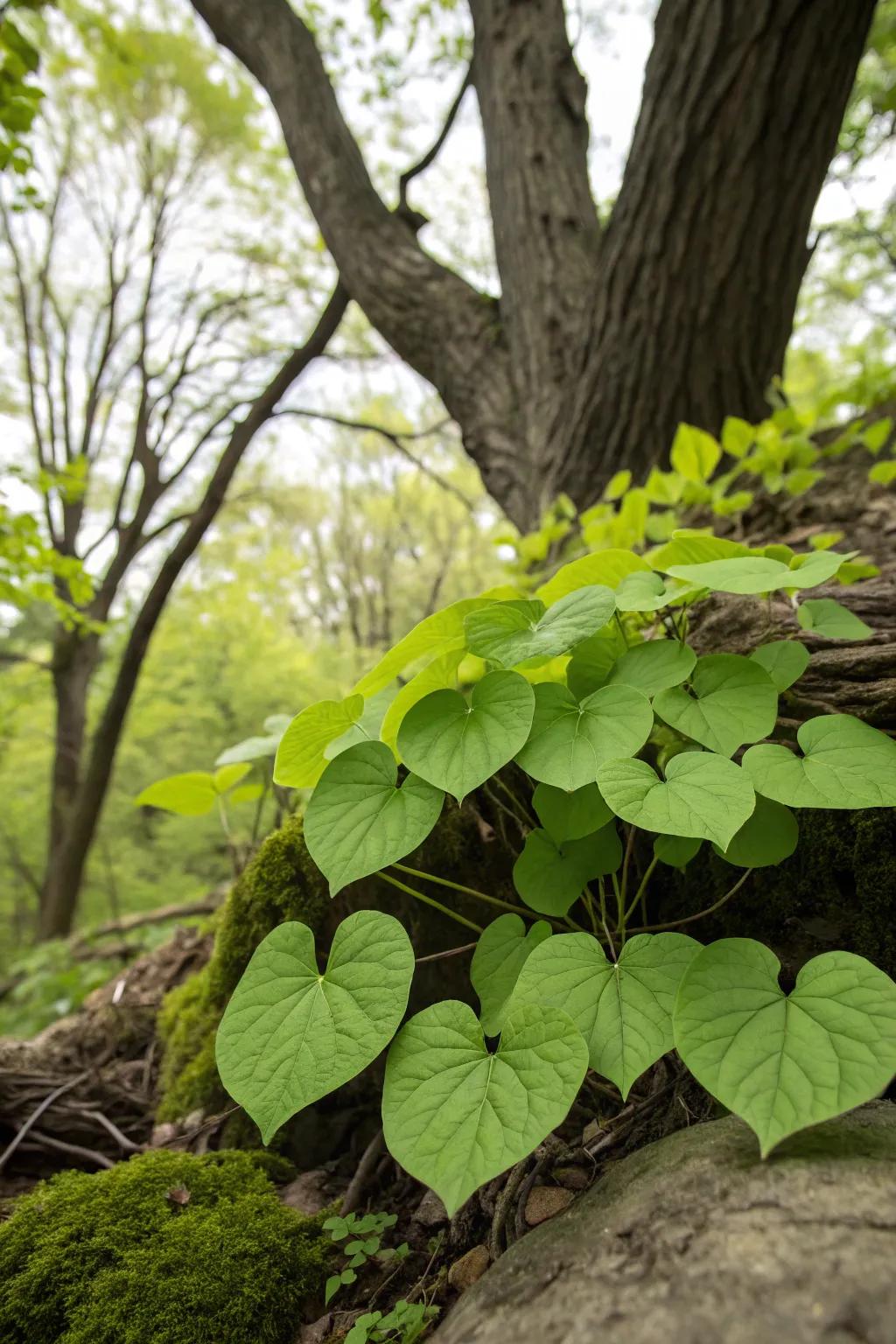
For something a little different, try wild ginger. Its heart-shaped leaves and subtle blooms add a unique charm, and it thrives in the rich, shaded soil under maples.
You might give these a try:
- Wild Ginger Seeds: Plant these wild ginger seeds to enhance your garden’s shaded areas with unique charm.
- Shade-Tolerant Soil Mix: Use this soil mix designed for optimal growth in shaded, rich environments under trees.
- Garden Hand Tools Set: Ensure successful planting with a durable garden hand tools set perfect for managing delicate soils.
16. Cyclamen: Winter Charm
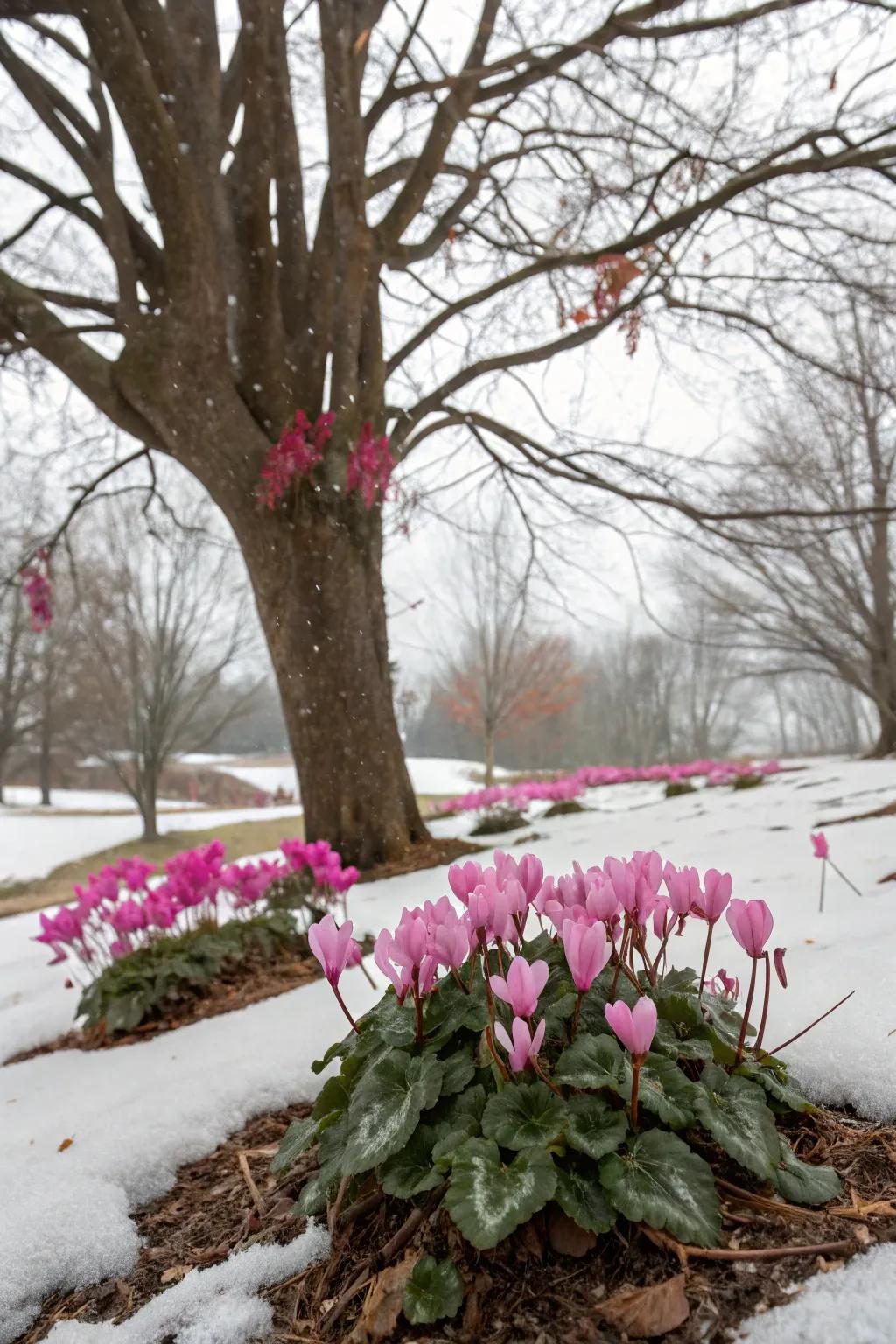
For winter interest, plant cyclamen under your maples. These charming flowers can bloom in cooler months, adding a splash of color when everything else is dormant.
Possibly helpful picks:
- Cyclamen Plant Bulbs: Brighten your winter garden with cyclamen bulbs; easy to plant and maintain for stunning blooms.
- Organic Potting Soil for Flowers: Ensure healthy cyclamen growth by using organic potting soil, ideal for winter flowering plants.
- Winter Gardening Gloves: Stay warm and protected while planting your cyclamen with insulated winter gardening gloves.
17. Epimedium: The Fairy Wings
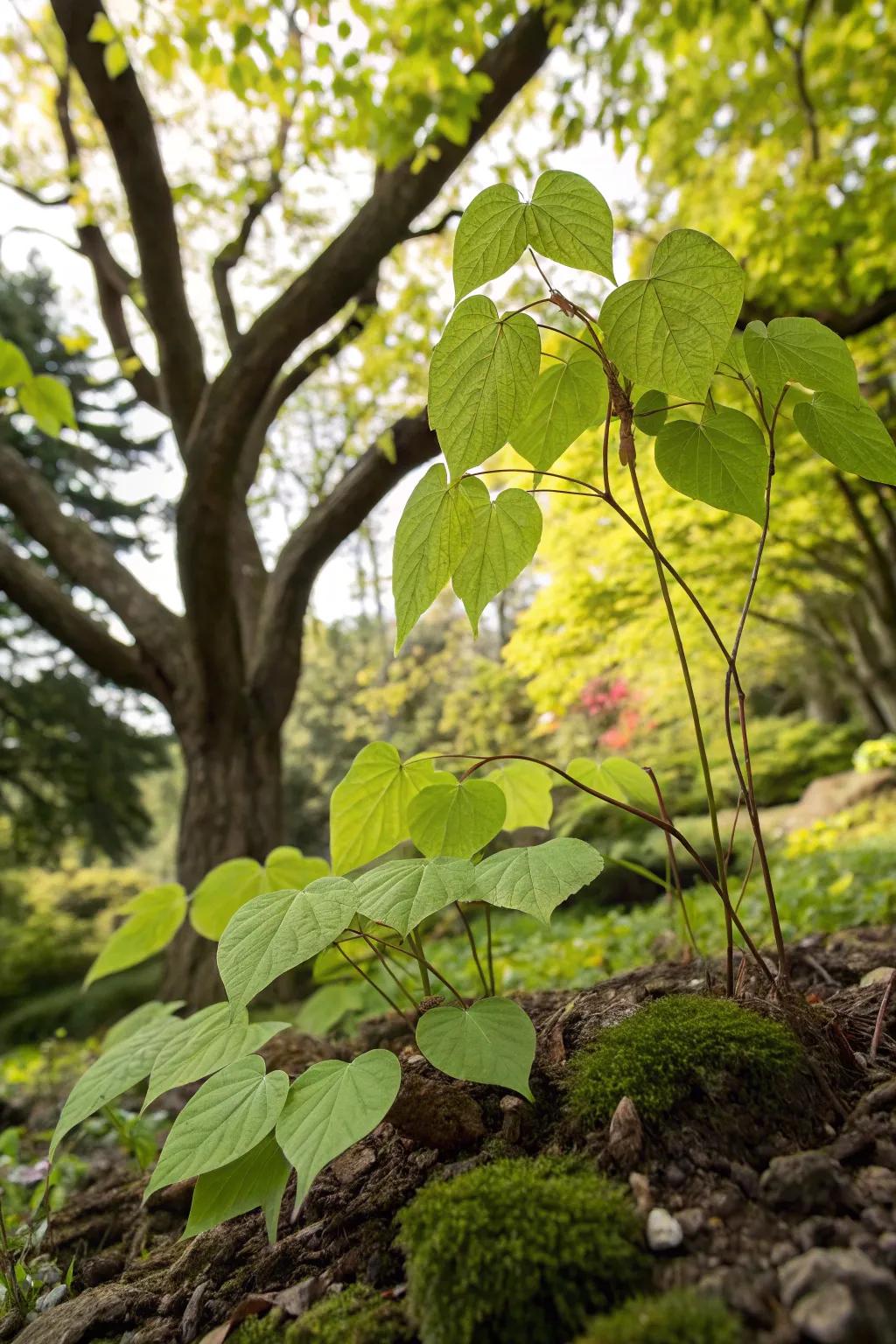
Epimedium, often called fairy wings, adds an enchanting touch with its delicate, wing-like leaves. It’s a wonderful choice for bringing a whimsical feel to the shade.
Some ideas to consider:
- Epimedium Plant Seeds: Grow your own fairy garden under maples with Epimedium seeds. Perfect for shade-loving landscapes.
- Organic Plant Fertilizer: Enhance your Epimedium growth with organic fertilizer for vibrant, healthy plants.
- Garden Mulch: Maintain moisture and soil health for Epimedium with quality garden mulch.
18. Solomon’s Seal: The Arching Beauty
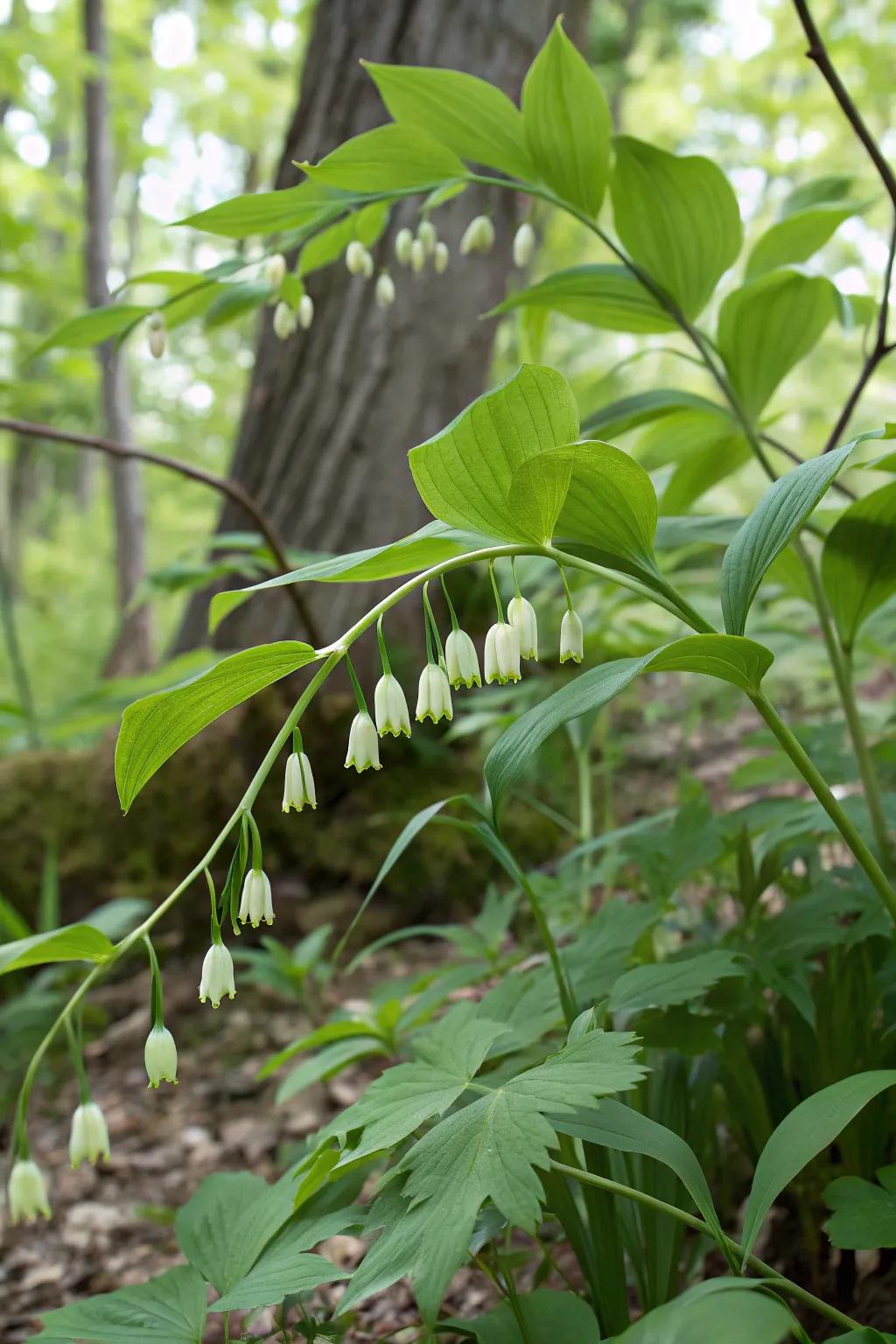
Solomon’s seal adds drama with its arching stems and bell-like flowers. It’s a personal favorite of mine for creating height and elegance under the tree’s canopy.
Some handy options:
- Shade-loving Perennial Plant Mix: Enhance your shade garden with this diverse perennial mix designed for under-tree planting.
- Organic Plant Fertilizer for Shade Plants: Boost the growth of your shade garden with this specially formulated organic fertilizer.
- Decorative Garden Mulch: Retain moisture and add aesthetics to your under-tree garden with this natural mulch.
